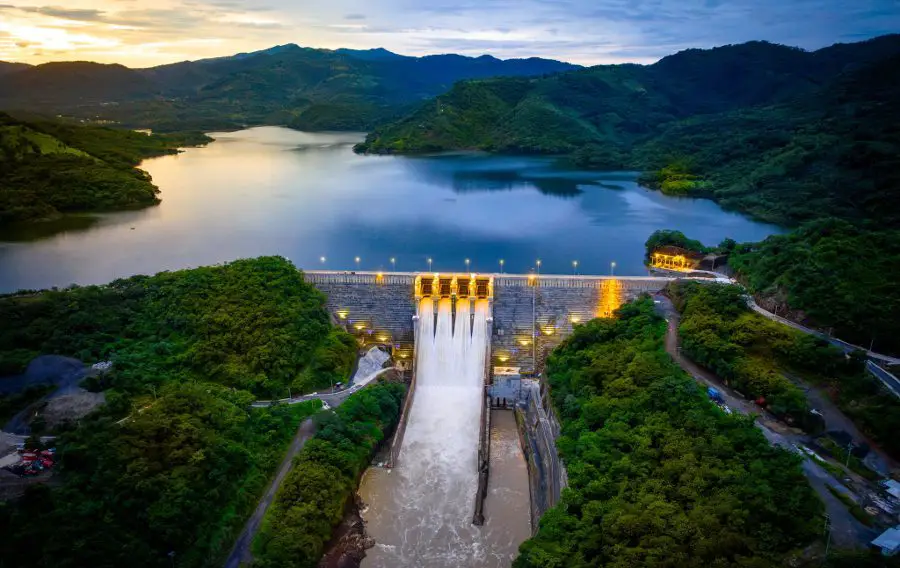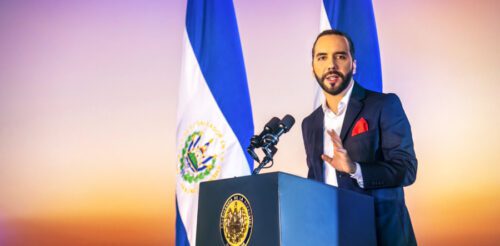The February 3 Hydroelectric Dam on the Torola River begins operations. The power plant, originally known as the El Chaparral, is in the San Luis de La Reina district of the San Miguel department.
The President of the Republic, Nayib Bukele, inaugurated the plan on October 19. The newly inaugurated Hydroelectric Power Plant will produce around 67 megawatts.
President Bukele stated that the power plant cost was around $800 million. Although the initial cost when its first stone was laid 15 years ago, during Antonio Saca’s government, was $219 million.
With the inauguration of the 3 de Febrero Hydroelectric Power Plant, we are not only paying off a historic debt. We are also reducing the electricity rate in times of crisis worldwide. Nayib Bukele.
The energy generated at this plan will be transferred to the November 15 power plant substation (44 kilometers away); from there, it will be injected into the national grid.
February 3 Power Plant, Marked by Challenges and Corruption
The El Chaparral Hydroelectric project has been one of the most emblematic corruption cases of the last 15 years in El Salvador.
Initially, it was estimated that the construction of the 3 de Febrero Hydroelectric Power Plant would have a cost of $219,197,700 million and a construction time of four years.
In September 2008, ex-president Elias Antonio Saca planted the first stone of the El Chaparral Hydroelectric Dam project, symbolizing the beginning of construction.
Ex-president Elias Antonio Saca governed El Salvador from 2004 to 2009 under the banner of the Nationalist Republican Alliance (ARENA) party. Ex-president Saca is in jail on a 10-year sentence for corruption.
The contract that the Hydroelectric Executive Commission (CEL) gave to the Italian firm Astaldi stipulated that the amount would not change and the work must be delivered in 2013.
Nevertheless, in June 2010, the first obstacles arose that began to delay the work. Astaldi alleged problems caused by a natural phenomenon. The company alleged that the mountain where the right side of the dam rested had moved.
This problem delayed the execution of the construction work for three years and cost Salvadorans $108.5 million. CEL and Astaldi agreed on an arraignment that increased the cost from $219 to 328 million; this happened during the presidential administration of Mauricio Funes.
The project was stopped until 2015 when the Hydroelectric Executive Commission (CEL) announced that work would continue but that the construction cost would increase by $71 million. It went from $219 to $399 million.
By the second FMLN presidential administration (Salvador Sanchez Ceren 2014 to 2019), the cost of the Hydroelectric plant had increased to about $470 million.
The then-president of CEL, David Lopez Villafuerte, stated that completing the work would have a significant increase and could reach $470 million because part of the structure and even the original designs were miscalculated.
Both FMLN ex-presidenst, Mauricio Funes and Salvador Sanchez Ceren, are now Nicaraguan citizens under the protection of Daniel Ortega. Funes and Sanches Ceren face multiple corruption charges in El Salvador.
In 2023, former President Mauricio Funes Cartagena was sentenced to 14 years in prison for crimes committed during his administration between 2009 and 2014. The former president, who is currently in Nicaragua, was tried in absentia.
Completing the February 3 Hydroelectric Dam
Nayib Bukele took office in June 2019; Bukele considered discontinuing the project due to the hundreds of millions that had already been invested without being able to finish the dam.
However, he decided against it because the previous administration had signed contracts guaranteeing payment. It would cost El Salvador the same to finish the project or not.
The dam should have cost less than $200 million, but the last two governments renegotiated it for $700 million. They negotiated in violation of the law with a company that later transferred part of that money to a Spa owned by the wife of a Nicaraguan [Ex-president Funes, now a Nicaraguan Citizen]. Hundreds of millions of dollars in the trash. President Nayib Bukele.
On September 17, 2019, CEL president Daniel Alvarez said that due to Astaldi’s retirement and the rethinking of the project, the Chaparral power plant work would end up costing $759.4 million.
El Chaparral power plant, also known as the February 3 Hydroelectric Dam, was inaugurated in October 2019, 10 years after its projected completion date and $581 million over budget, for a total cost of about $800 million.

February 3 Hydroelectric Dam, a New Tourist Destination
Morena Valdez, the Salvadoran Minister of Tourism, noted that the artificial lake formed by the February 3 Hydroelectric Power Plant can be used by Salvadorans and foreigners for sustainable rural tourism.
The February 3 Hydroelectric Power Plant was very good news that President Bukele gave us yesterday, we are going to make the most of the dam to carry out tourist activity. Morena Valdez, Minister of Tourism of El Salvador.
This whole area surrounding the El Chaparral Dam is suitable for sustainable rural tourism. “Tourism is one of the sectors of the national economy that is generating a larger number of jobs,” stated the minister.

 Hydroelectric Dam February 3 (El Chaparral).
Hydroelectric Dam February 3 (El Chaparral). 


